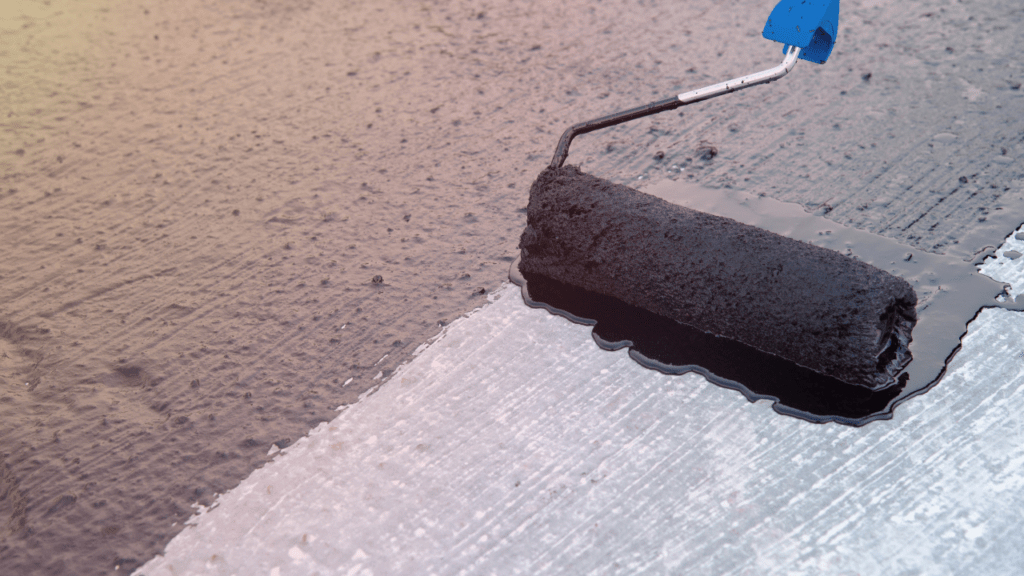Water proofing is a method of applying coatings to a structure to make it waterproof or leak proof. Waterproofing is one of the most critical construction activities meant for enhancing the life and stability of the building/structure. In other words, we can say waterproofing means preventing the entry of water through a structure. This article is about the waterproofing methods suggested for residential, industrial, and commercial applications.
Why waterproofing is required?
Waterproofing is applied for basement or below-ground areas, toilet areas, swimming pools, water storage tanks, water retaining structures, rooftops and podium areas, deep industrial structures, foundations, etc.
- Waterproofing is a must for basements below grade/ground level to prevent water seepage and structural damages. Basement waterproofing is unavoidable in areas where the water table is very high, and chances of rainwater flooding around the building and sweeping through the basement walls.
- Concrete is a porous material and hence vulnerable to chemical attack. Water will enter and cause structural deterioration to the concrete and corrosion of embedded steel.
- Rooftop and podium areas are exposed to rain and water seepage through concrete surfaces and cracks will damage the valuable interiors and embedded steel.
- Waterproofing is a much-needed construction activity essential to maintain the life of the building.
Also Read : Ready mix plaster vs conventional plaster – comparison
Also read : Smart Building- 4 features full guide
Areas of water proofing
Water proofing is required in the following areas to prevent serious structural damage and enhance the durability and life of a building/structure.
- Basement structure
- Kitchen,toilet and other wet areas
- Roof, terraces, balconies, podium, grass decks etc
- Swimming pools and water retaining structures
- Under ground tanks
- Under ground industrial structures like wagon tipplers and track hoppers
- Tunnels etc
Types of water proofing
Different waterproofing systems are suggested for different areas and locations depending upon the nature of water seepage expected.
They are classified on the basis of method adopted
- Cementitious water proofing
- Liquid water proofing membranes
- Bituminous water proofing membrane
- Bituminous coating
- Polyurethane (PU) based water proofing membrane
Also read : Shotcrete – A total overview – Shotcrete vs gunite
Cementitious water proofing
Cementitious waterproofing is the most common and economical method of waterproofing used in construction works. The materials are readily available and can be mixed and applied with ease.
The cementitious waterproofing materials are available in various types.
Commonly used types are
- Polymer modified Cementitious waterproofing
- Acrylic polymer modified Cementitious coatings.
- Crystalline water proofing
Polymer-modified cementitious waterproofing
Polymer-modified cementitious waterproofing systems are two-part cement-based polymer coatings that are highly flexible and elastic. Polymer-based coatings possess enhanced adhesion and are breathable. No vapor from concrete is entrapped inside. These types of coatings are preferred for waterproofing works in water storage tanks, basements, swimming pools, and pumping stations, and any other structures that are constantly in contact with water. These coatings are not preferred for waterproofing works exposed to sunlight.

Acrylic polymer-modified cementitious coating
The acrylic polymer-modified cementitious coating is a single component /two-component material mixed with an acrylic polymer and special additives. The acrylic additives provide strong adhesion and a durable coating on any surface like steel, concrete, etc. The ingredients constitute cement-based materials that can easily blend with water or polymer emulsions. The acrylic polymer coatings are solid, durable, elastic, and nonbreakable.
Crystalline water proofing
Crystalline Cementitious Waterproofing systems consist of cement, quartz, or silica treated with and chemicals for the crystallization process. Once combined with water, it creates a crystalline structure that fills the pores, cracks, and capillaries in concrete which disallows water from seeping through them. This method of waterproofing is preferred for internal and external waterproofing of concrete structures.
Cementitious water proofing systems are not preferred for areas where there are structural cracks or any other moments.
Liquid-applied membrane
Liquid-applied membrane (LAM) is a monolithic, fully-bonded, liquid-based coating that cures to form a rubber-like elastomeric waterproof membrane. These are mainly used for roof waterproofing.
The coating is capable of stretching and returning to its original shape without damage. They can also be reinforced with materials like glass-reinforced plastic to enhance tensile strength.
Liquid waterproofing membranes provide a cost-effective method of making a new or existing roof waterproof. They are durable, flexible, and got excellent life of around 20 years without failure. The application is done using brushes or sprayed over a coat of appropriate primers. The main ingredient responsible for the properties is polymer-modified asphalt.
Polyurethane liquid based elastomeric membrane
Polyurethane waterproofing is a two-component material based on urethane pre-polymers and cures by reaction with atmospheric moisture to form a continuous elastic and rubbery film. Unlike other waterproofing systems like sheet membranes and liquid applied membranes, this polyurethane application requires comparatively less skill and supervision.
These membranes got excellent UV-resistant properties and got good adhesion to any surface like concrete, slate, tile, steel, etc. They are mainly used for roof applications.
Bituminous coating
Bituminous coating is a flexible coating used for structural protection and waterproofing of concrete foundations and exposed sides of underground exposed structures. The main ingredient of bituminous coatings is bitumen based material and anti-stripping agents. Bituminous coating is not preferred for works exposed to sunlight. On exposure, they will become brittle and peel off from the surface.

Bituminous membrane or APP Membrane

APP membrane is a bituminous membrane modified with APP polymers. APP stands for Atactic Polypropylene and is manufacture from a plastic called atactic polypropylene and bitumen mix. These membranes are also called torch-applied membranes. During this process, the plastic begins to melt and form a wax-like liquid which is levelled on a surface.

